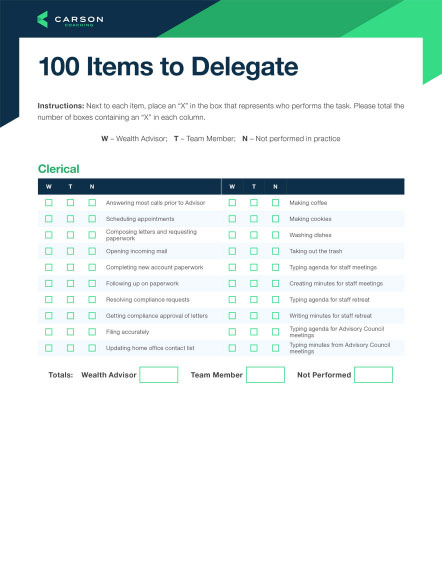We still haven’t solved the puzzle of building inclusive cultures.
But when organizations are able to develop inclusive cultures where women can thrive, they can be more influential and differentiate themselves in the industry. Our 2023 State of Women in Wealth Management research gave us insight into why culture is so important to women in financial services and what specifically is a threat to creating inclusive cultures.
In our research this year, more than 90% of respondents agree that firm culture is an important element in their level of satisfaction at work – 91% of women agreed and 83% of men agreed or strongly agreed this was the case.
However, for women, the main detriments to building inclusive cultures boil down to sexism perpetuated by queen bees, finance bros and the lingering old boys’ club mentality.
In this blog, we’re going to talk about the main challenges to building inclusive cultures in firms and the industry at large, and nine ways we can change the status quo.
‘I Had it Worse, So You Should Be Happy’: Why Queen Bees Are Culture Killers
In our most recent State of Women in Wealth Management research, our qualitative analysis found that senior women leaders sometimes discriminate against other female leaders and stakeholders.
“Some women think that there’s only one seat at the table,” one respondent noted. “And so instead of working collaboratively, they’re very competitive.”
Research in the dubs this the “Queen Bee Phenomenon” and finds that it’s rooted in internalized sexism – particularly in male-dominated industries like ours. The story goes like this: Women in male-dominated fields will emphasize their competitiveness and masculinity in order to be accepted into the fold by their male counterparts. In acting more like their male counterparts, they start engaging in sexist and discriminatory behavior toward other women.
I reached out to women in financial services on LinkedIn to get more insight into this phenomenon in our industry. One woman noted that she’s come across at least two queen bees in her tenure – one of which was her former direct manager. She’d mapped out a career path for herself based on suggested paths put forth by CFP Board, but instead of being supportive, her manager said it was “unrealistic” and that she had to “work way longer before moving up in the corporate world.”
The respondent knew that wasn’t true, so she put in her two weeks’ notice that same month.
“It’s unmotivating and counterproductive,” the respondent said. “It’s the backward mentality of ‘I had it worse, so you should be happy.’”
Queen bees drive away qualified female talent. Another woman admitted that she was actively seeking a new role outside of her firm because of a queen bee.
“She’s undermined my confidence and made me second-guess myself,” she noted. “She inspired me to leave my firm.”
Finance Bros, Old Boys and Sexism
I was talking to one of my friends recently and I asked her how a recent industry conference went.
“It was not great,” she said. “It’s like the old guys in suits have been replaced by young guys in T-shirts.”
The numbers – and the anecdotal evidence – show that women are still vastly underrepresented in this industry. CFP Board reports that women make up around 23% of CFP professionals, which is nearly the same as the number when they first started tracking this data a decade ago.
And the residual “old boys’ club” and emerging “bro culture” are barriers to inclusive cultures in both firms and the broader industry. Among the things associated with both are tolerating crude language and belittling behaviors.
“Things like locker room talk make it a bit of a challenge to connect,” a respondent said. “And I feel pressure to normalize that stuff and it’s not comfortable.”
And it seems that both the old boys and the finance bros perpetuate the narrative that the prototypical financial advisor is male, causing women to feel a greater burden of proof in the face of sexism.
“I feel like we have to prove ourselves more,” one respondent said. “I feel like I get questions that I don’t think they would ever ask men.”
Another respondent noted, “I still think there’s a bias when you walk into the room. If I walk into a room, people think I’m an assistant. … They don’t necessarily think financial advisor.”
What to Do: Nine Elements to Gender-Inclusive Cultures
Our qualitative research found that when it comes to building inclusive cultures, women want to see buy-in from their leaders. They want to see leaders being intentional about making moves to build inclusive cultures, and holding people accountable when they act in a way that’s detrimental to that culture.
Inclusive culture “comes directly from the owner or CEO,” one respondent said. “And it doesn’t have to be a woman. There are plenty of men that really get it and have designed firms that are conducive to women being successful. They’re not afraid to make the space for women, listen to them and take feedback.”
Here are the nine ways our respondents said can help firm leaders build better cultures.
1. Support female leaders. Leaders need to support their female employees so other leaders in the firm can model that behavior.
“Leaders need to create [an environment] that’s welcoming to women by not giving into locker room talk at sales meetings and things like that,” another respondent said. “And if they hear people in the company talking that way, they need to stand up and say, ‘Hey, we don’t talk like that here. That’s not appropriate.’ Take a stand for it.”
Only 36% of respondents “strongly agree” with the statement, “I feel supported by leadership at my firm” – which was roughly the same when we drilled into the responses by gender.
2. Facilitate mutual respect. Create environments where all staff at all levels are respected.
“Our industry doesn’t do a very good job of valuing staff other than financial advisors,” one respondent said. “And it’s awful. …The staff talk to our clients more than we do. Realize that and lift them up and make them partners in your success.”
3. Value all voices and are collaborative. Value input and voices from everyone and encourage teamwork and collaboration. Don’t foster competitive or individualistic cultures.
“[Firm leaders should] recognize the value that different employees bring,” a survey respondent noted. “Not everybody is going to be a salesperson or a portfolio manager. But there’s a tremendous amount of value that they can bring.”
4. Enable work/life integration. Offer your stakeholders the tools and option to balance their work life. This is especially critical for female employees, who are often still the primary caregivers and the ones who do the majority of the domestic duties.
“We are still the primary caregivers in our homes and we are the ones that are expected to make the sacrifices on a daily or lifecycle basis,” a respondent noted.
5. Prioritize learning and development. Offer women the chance to build necessary skills and knowledge, as well as the confidence to be successful.
6. Allow professionals autonomy. Give your employees autonomy to do their work so they know they’re trusted and valued.
“Empower people to be autonomous in their decision making,” one respondent advised. “Hire good people, let them do their job instead of micromanaging and making them feel like someone’s looking over their shoulder.”
7. Implement and follow policies designed to support women. Implement policies that include longer maternity leave, tools and resources to support flexible work schedules, and a salary for early-career advisors.
“One of the advantages of big firms … is maternity leave – the ability to have a family and build your career,” one respondent said. “I believe this is a huge hurdle for many younger women who consider this career.”
8. Invest in resources for intentional development of female leaders. Implement training that empowers women to excel in sales and leverage their own strengths.
“I hope we will stop training women to act like male financial advisors, and instead modify our training programs we have had at these wonderful organizations to address what women do to build relationships,” a respondent said.
9. Promote women to leadership positions. Female advisors want to see women in senior leadership roles to provide tangible examples of what women can achieve in this business and to show that your firm values female leaders and that they have a future there.
“We need to have more women leaders, which I know isn’t something where you snap your fingers and that happens overnight,” another respondent said. “But there needs to be more energy there.”
The Bottom Line
Finance bros and old boys are still a large part of the culture of our industry and our firms. And now we’re adding queen bees to the mix. But the truth is the culture that these types of people create are driving women away.
Our qualitative research this year found that some of our respondents started their own firms to get away from these types of cultures and to better serve female clients. Research calls this “forced entrepreneurship.”
The HR platform Quantum Workplace found that around 20% of financial services employees are a retention risk, and that it costs around 1.5 times an employee’s salary to replace them.
We need to focus on breaking down the barriers and creating cultures and systems that accommodate gender equity.
At the end of the day, driving women away is a hit to firms’ bottom lines. And it’s our responsibility – as individuals and organizations – to take action in order to secure a better future for women in our industry and for our industry as a whole.


